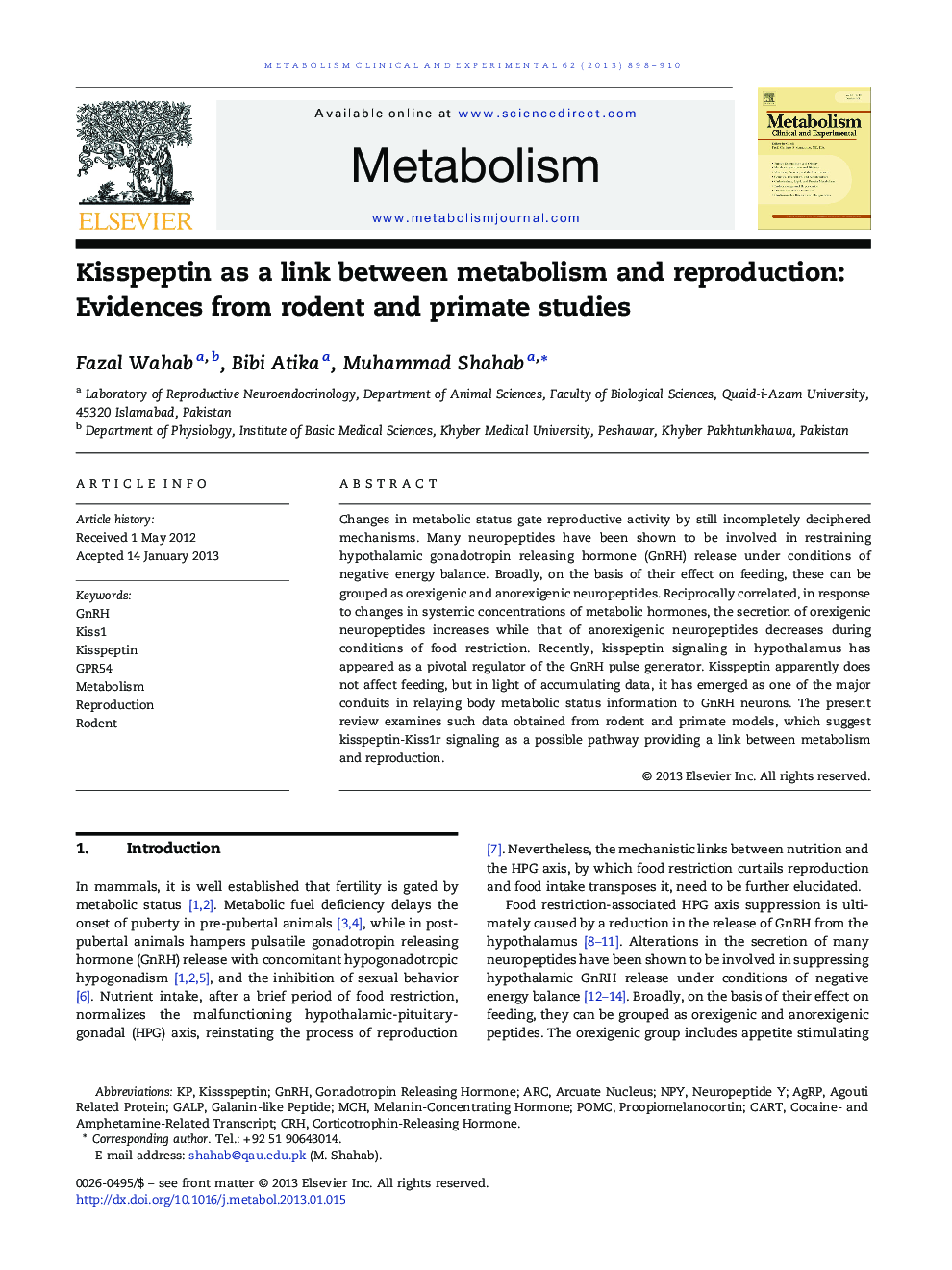| Article ID | Journal | Published Year | Pages | File Type |
|---|---|---|---|---|
| 5903534 | Metabolism | 2013 | 13 Pages |
Abstract
Changes in metabolic status gate reproductive activity by still incompletely deciphered mechanisms. Many neuropeptides have been shown to be involved in restraining hypothalamic gonadotropin releasing hormone (GnRH) release under conditions of negative energy balance. Broadly, on the basis of their effect on feeding, these can be grouped as orexigenic and anorexigenic neuropeptides. Reciprocally correlated, in response to changes in systemic concentrations of metabolic hormones, the secretion of orexigenic neuropeptides increases while that of anorexigenic neuropeptides decreases during conditions of food restriction. Recently, kisspeptin signaling in hypothalamus has appeared as a pivotal regulator of the GnRH pulse generator. Kisspeptin apparently does not affect feeding, but in light of accumulating data, it has emerged as one of the major conduits in relaying body metabolic status information to GnRH neurons. The present review examines such data obtained from rodent and primate models, which suggest kisspeptin-Kiss1r signaling as a possible pathway providing a link between metabolism and reproduction.
Keywords
Related Topics
Life Sciences
Biochemistry, Genetics and Molecular Biology
Endocrinology
Authors
Fazal Wahab, Bibi Atika, Muhammad Shahab,
